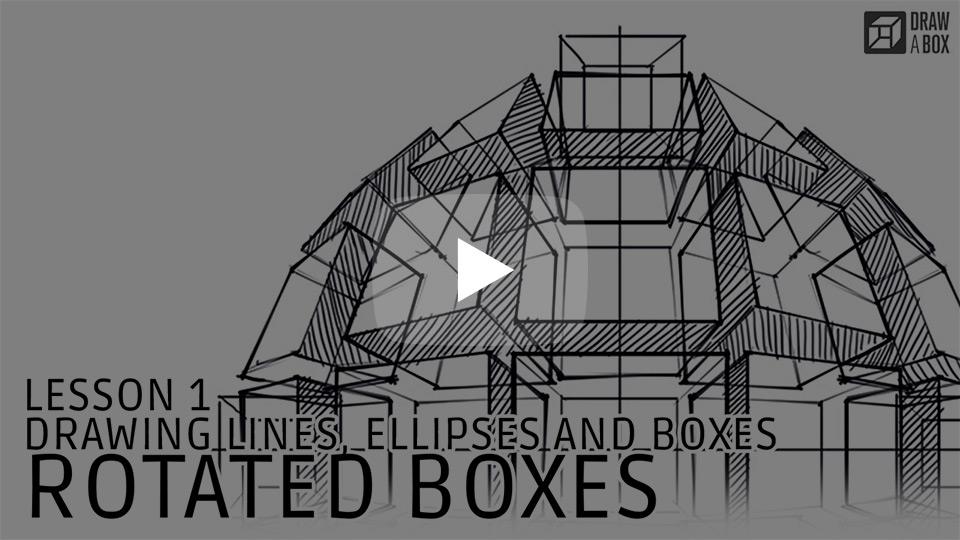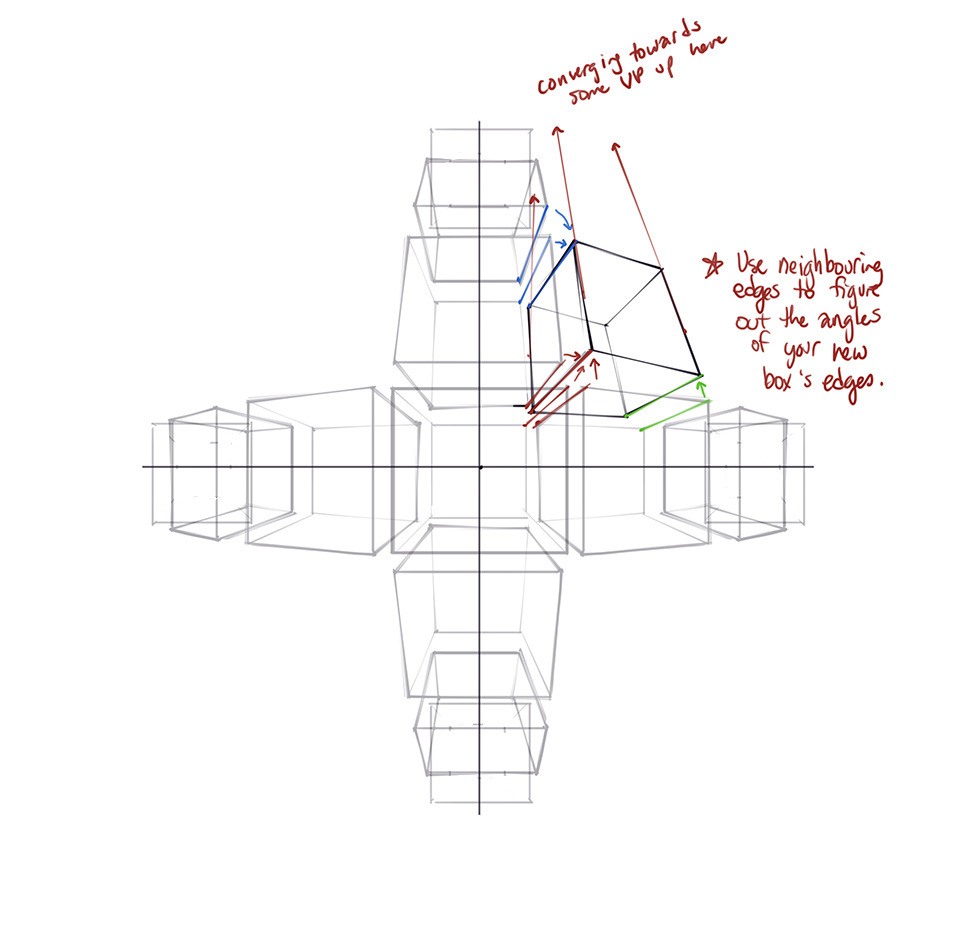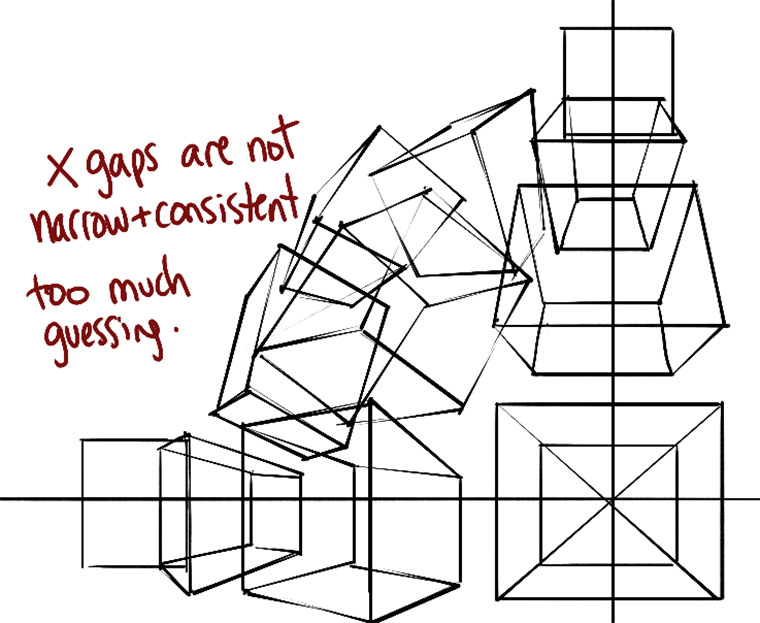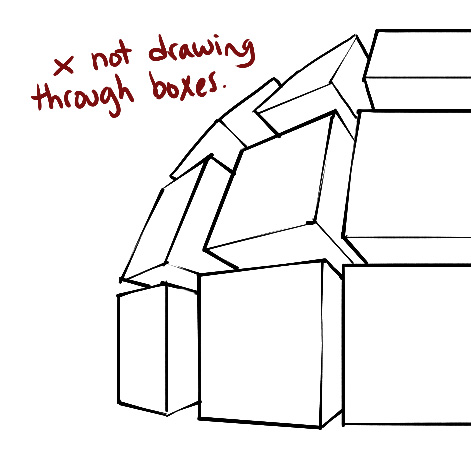Cat In A Box Drawing
This is where the message goes!
Going through both the videos and the text is important - it allows us to attack this complicated material from many angles, learning from it more effectively and efficiently. But reading isn't for everyone - try listening instead.
Drawabox has been working with the guys over at Audiblogs to make our lessons more accessible. With much more natural intonation and inflection than normal text-to-speech, it makes absorbing the material vastly easier. You can test it out on Lesson 0, and the Lesson 1 Lines section for free. You can also learn more about our collaboration with them here.
Lesson 1: Lines, Ellipses and Boxes
Rotated Boxes

This is going to be the first major exposure to something I do sometimes with my lesson's exercises: assigning tasks that are not necessarily going to be within your current ability to complete. To put it simply: these are probably going to be too hard for you. But that doesn't matter - you should still do them.
All I ask is that you complete the exercise - not perfectly, not even well. Just finish it to the best of your current ability. I ask for nothing more than that.

So we're going to start off by drawing a vertical and a horizontal axis. If you read the extra notes on the horizon, eyeline and horizontal object axis, you'll know that these lines are where two of our three vanishing points are going to sit.
You can draw these axes with a ruler or straight edge, but all the boxes will be drawn freehand with the ghosting method.

To start with, we're going to draw a box in the middle. It'll be a square, but I want you to go ahead and draw through it, adding the lines that can't generally be seen without x-ray vision. We'll be doing that for all of our boxes in this exercise, because it helps us to better understand how they sit in 3D space, and how that changes as they are rotated.

Next, to provide us with some sort of visual reference as to the full range of rotation we want to fill, go ahead and place similar squares on the far ends of both axes. These are just going to serve as a reminder, but they represent boxes that have been rotated a full 90 degrees relative to the center.
In all likelihood, you may end up placing these too far out - don't worry about it. You don't need the boxes to line up to these, they're just there to remind your brain that you're trying to cover a full 180 degrees for each axis.
Our brains actually don't like it when we rotate objects - they prefer things to stick to nice, clean grids, so as soon as something is turned, it starts to panic. As such, you'll often find yourself being tricked into thinking you've rotated a box more than you actually have, resulting in you covering a much smaller range of rotation in the end. These stand-ins at each end help combat this by being a constant reminder of what you're trying to achieve.

Now lets take a break and talk about the rotation of a box. In this animated diagram, you can see that as this box is turned on its vertical axis, its two horizontal vanishing points slide along the horizon line. The distance between the vanishing points stays the same - they're just skittering along.
As it rotates, the convergence towards one vanishing point becomes more gradual, with the VP moving further and further from the box, eventually going to infinity. The other VP comes closer and closer however, and its convergence gets more rapid.

Now, let's draw our first rotated box, following the principles demonstrated in the animated diagram above. The vanishing points slide along the horizon, and the convergence of one set of lines becomes more gradual, and the other becomes more dramatic.
Something worth noting: they're not actually cubes. In order for this exercise to work and for all of the boxes to stay nice and tightly packed together, we're actually going to be using boxes that are not perfectly rectilinear or cuboid. Meaning, the far end of our boxes are going to be smaller than the closer end, so they taper in one dimension.
It's actually not that important to keep this in mind, but it is a point that has confused some of those who've thought a bit too hard about that particular aspect and distracted themselves with it. So yes - the boxes are tapered, they're not cubes.

As you add more boxes to fill out your axis (note that I specifically want you to draw 2 on either side of the center one, no more than that and no less), keep your boxes packed together with narrow, consistent gaps between them. They will overlap one another, and that's fine. I also want you to continue drawing through them as you have been thus far.

Do the same thing for the vertical axis. It's no different from the horizontal one, especially since you'll be rotating your page around plenty in the use of the ghosting method, so up, down, side to side really loses meaning.

Now, the corners - this is where a trick that you hopefully have already been taking advantage of comes into play. The fact that we've been keeping our boxes close together is critical because it allows us to use neighbouring edges as hints when adding new lines.
Notice how in this example, I've colour coded sets of lines shared by different boxes that are very close to running parallel to one another? This is very useful information. As you construct forms and objects, you can often find information present in their surroundings - especially the things physically closest to them. This can allow you to infer how certain lines should behave without having to think about far-off vanishing points.

Keeping this up, fill in the rest of the boxes. The corners are the most difficult, especially as you get all the way out to the extreme corners. All the same, I want you to complete this exercise even if attempting the hard parts is going to muck up the whole page.
That's completely fine - we're not drawing something for you to pin on your fridge in triumph. The value here is in the doing of it, not the result.

Continuing along, you'll eventually have the whole set done. There are going to be a lot of lines floating around, so keeping them all straight in your head will be a challenge, but you can use some strategically placed line weight to help clarify where certain forms overlap. Just make sure that when you add line weight, you're doing so with a confident stroke using the ghosting method, just as you would when initially drawing the line.
The purpose of this exercise
While serving as a bridge between the previous two exercises (where we have explicit vanishing points present on the page) and the next one (where you've got no vanishing points whatsoever), the rotated boxes exercise is also about learning to infer information about space and the arrangement of objects from neighbouring objects. Each box has others beside, above and below it, and by the time you're drawing one, some of these others have already been constructed. While their edges don't run perfectly parallel to one another, they do have a similar enough trajectory to some of the next box's edges to provide some important information.
While we do a lot of educated guesswork, our estimations of convergences and perspective in general are based on a number of more grounded sources. We're still aware of vanishing points, even if they're not drawn explicitly on the page or even present within the frame. They're still there, because we can see all these lines pointing so vehemently towards them. By not being so tightly tethered however, you're given a great deal more freedom to play inside of space, adhering to the spirit of the rules without being bogged down by them.
I think this is a critical part of drawing, and puts you in a much stronger position than someone who's only learned perspective through the laborious plotting of innumerable vanishing points, reference points, measuring points, and so on, and who goes on to draw a dog without understanding how perspective can apply to it. Perspective, form, 3D space - these are all factors in everything we draw in some way or another, and so we need to learn to approach it in a more everyday kind of fashion.

Mistake: Not actually rotating
The most common mistake I see is that students confuse the natural convergences of perspective with rotation. As you can see here, the corresponding edges of these boxes are all converging towards roughly the same vanishing point.
By the rules of perspective, this means that they're not rotated relative to one another, because their vanishing points have not moved.
This often is seen together with students stretching the boxes into the distance, as though this is the way their brain is fighting against the rotation, in its desire to keep things nice and gridlocked.

Mistake: Not keeping things together
Keeping your gaps narrow and consistent is critical to being able to use neighbouring forms as effectively as possible to infer information about space.

Mistake: Not drawing through boxes
Drawing through boxes helps us to understand how those forms sit in 3D space, and how they relate to other forms that are present. That understanding of space is something that develops slowly, and we can work on it by exploring it in this manner.
If you do this exercise without drawing through your forms, you're going to end up missing on a great deal. It may look a lot cleaner, but it'll be worth a lot less in terms of what you get out of it.
Example homework
For once, I'm not going to say that this is what your work should look like when you're done - because in all likelihood, it won't. If it doesn't, I don't want you to fuss over it - as long as you've completed it and drawn each and every box and made an attempt to achieve a full range of rotation on each axis, then move onto the next exercise.
If you've struggled with this exercise, then I'd recommend that once you complete the rest of lesson 1, you move onto the 250 box challenge. This will give you a great deal more practice with freely rotating forms in 3D space, and how they can be manipulated.

This page has student-made readings/recordings
They can be helpful for those of you who cannot follow along with the text, or who need live examples for the exercises to follow along with.
Just keep in mind that as the lessons themselves are continually being updated and adjusted, the audio recordings may not be completely up to date.
Cat In A Box Drawing
Source: https://drawabox.com/lesson/1/rotatedboxes
Posted by: murphycattat.blogspot.com


0 Response to "Cat In A Box Drawing"
Post a Comment